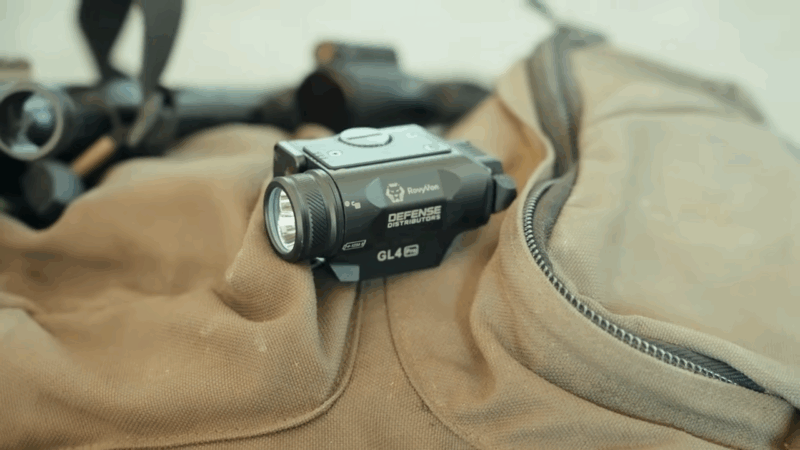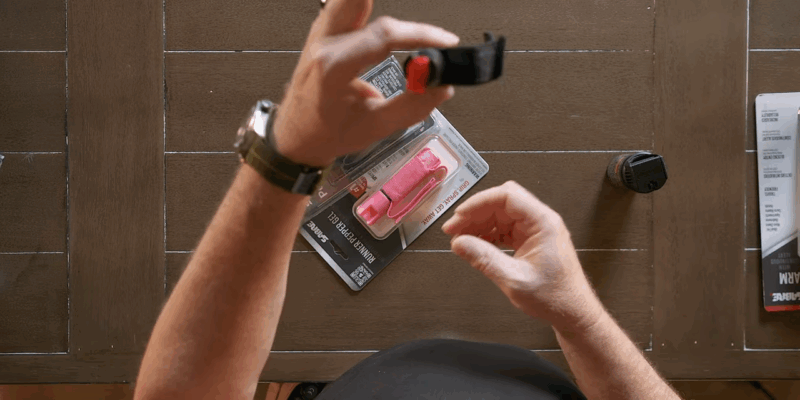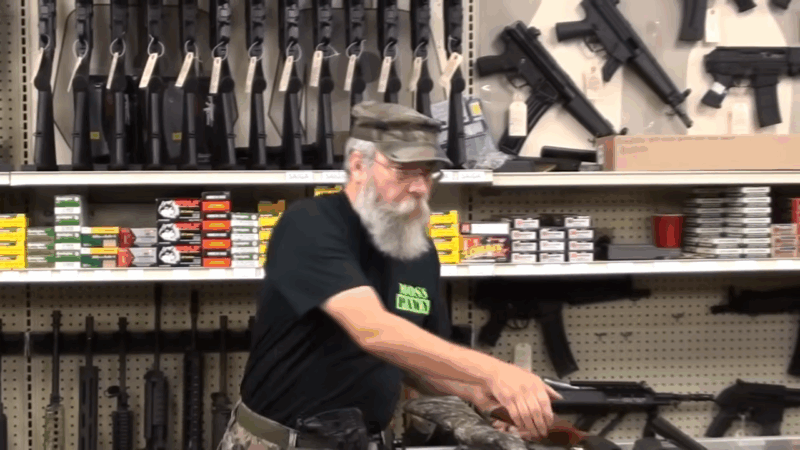Tactical gear once belonged to military kits and law enforcement lockers. Today, civilians across the country legally own body armor, plate carriers, modular belts, and other specialized tools. Demand continues to rise.
People want equipment for self-defense, competitive shooting, or emergency readiness. But legality remains complex. Federal rules cover the basics, but state laws set unique boundaries.
Some gear is legal nationwide. Some comes with conditions. Others cross into restricted territory, even with no criminal intent. Knowing the line protects your rights and keeps your kit fully legal.
Those looking to upgrade pistol setups often run into similar questions. Accessories like holsters, stabilizers, and rails can help with control and safety. Recover Tactical stands out as a trusted name. It offers legal, well-designed add-ons built for responsible use.
While the focus here stays on legality by state, readers who want pistol-specific upgrades can explore those options with confidence.
Each part of this article explains where gear is legal, what restrictions apply, and how civilians can own it without risk.
Tactical Firearms: What Civilians Can Legally Own Across All 50 States
Tactical firearms include rifles, shotguns, and pistols that are built for control, precision, and rapid access. These are not limited to military use. Civilians in all 50 states can legally own many of them, but state-level restrictions apply based on how the firearm looks, functions, or gets configured. Some states focus on capacity.
Others ban by name or style. Every firearm must also meet federal law, including background checks and eligibility. The most common limits target semi-automatic rifles, short-barreled weapons, and features that appear tactical in nature.
Semi-Automatic Rifles: Legal in Most States but Restricted by Features
AR-15 style rifles remain legal in most of the country. They qualify as semi-automatic firearms, not automatic weapons. Federal law does not ban them.
However, California, New York, Connecticut, Massachusetts, New Jersey, and Maryland classify them as assault weapons based on features like pistol grips, adjustable stocks, flash suppressors, or detachable magazines. In those states, owning one requires either feature removal or registration.
Some models are banned outright. States like Illinois have passed similar laws with pending court challenges.
Short-Barreled Rifles and Shotguns: NFA Items That Face State Bans
Short-barreled rifles (SBRs) and short-barreled shotguns (SBSs) fall under the National Firearms Act. Legal ownership requires a federal tax stamp, background check, and long approval process.
Even with that federal approval, many states still block ownership. New York, Hawaii, Delaware, and New Jersey do not allow civilians to own SBRs or SBSs under any condition.
Other states, like California and Illinois, impose heavy limitations or require additional state-level permits.
Tactical Shotguns and Pistols: Still Legal with Proper Configuration
Tactical pump-action or semi-auto shotguns are legal in every state unless modified to fit SBR or SBS definitions. Pistol grip-only shotguns can trigger restrictions depending on barrel length. Tactical pistols are legal in all 50 states if they meet standard handgun laws.
On the other hand, features like stabilizing braces, optics, or forward grips may reclassify the weapon under federal rules. Some states mirror those limits, especially if the build resembles a short rifle or unregistered SBR.
Automatic Weapons: Legal Federally with Heavy Limits, Banned in Most States
Fully automatic firearms can still be legally owned under the National Firearms Act if made before 1986 and registered accordingly. Civilians must obtain a tax stamp and pass strict federal checks. However, most states ban possession.
Only a small number—such as Texas, Utah, and Arizona—allow ownership of legally registered automatic weapons. In all other states, civilian access is blocked by state law regardless of federal approval.
Body Armor: Where Civilians Can Legally Own It Without Permits
Body armor ownership sits at the center of tactical legality debates. Civilians across the United States often purchase it for protection during training, private security work, or home defense.
Federal law does not ban body armor for civilians, but each state has the power to enforce its own rules.
Some states place limits on where or how it can be used. Others restrict who can buy it or block online sales altogether. Legal clarity matters before purchase.
Federal Law: No Ban on Possession but Limits Tied to Criminal Use
At the federal level, civilians can own and wear body armor without registration. No national permit system exists. However, using body armor during a federal crime triggers extra charges and penalties.
Federal law also blocks ownership for convicted violent felons. Outside of that, private citizens remain eligible to buy it legally.
State-Level Bans: New York and Connecticut Impose the Strongest Limits
New York bans the sale and possession of body armor for most civilians. Only individuals in certain approved professions may own it, such as law enforcement officers or licensed security.
Connecticut allows body armor sales but requires in-person transactions. Online sales into the state are illegal.
Other states, such as Maryland and Louisiana, have location-based restrictions. In Maryland, prior convictions can block legal ownership. In Louisiana, wearing body armor on school property violates state law.
Everyday Use: Legal in Most States but Carry Risks in Public Spaces
In most states, civilians may own and wear body armor freely. However, wearing body armor into government buildings, protests, or public demonstrations may trigger suspicion or legal consequences.
Context and location matter. Law enforcement can question intent, especially if paired with other tactical gear or weapons.
Weapon-Mounted Lights and Lasers: Legal in Most States, But Not Always Welcome

Most civilians install lights or laser aiming devices for practical use at the range or in low-light defense. No federal law prohibits them. Most states allow them freely. Still, legality can change based on function, mounting method, and use in public.
Lights on Rifles and Pistols
Weapon lights remain legal across all 50 states. They do not affect firearm classification. Civilians can use them without permits. However, in some cities and counties—especially within California or New York—misuse may lead to charges related to public safety violations or “brandishing.”
Laser Devices and Infrared Systems
Red and green lasers are generally legal. Infrared (IR) lasers for night vision setups are legal under federal law but may fall under export control rules. California and Massachusetts have passed local restrictions based on laser output. High-powered lasers may also fall under separate bans unrelated to firearms.
Misuse and Intent
Mounting a light or laser is legal. Using it to intimidate or threaten can cross legal lines. Intent always matters. A legal accessory used during a crime often enhances the charges in court.
High-Capacity Magazines: The Most Commonly Banned Tactical Accessory
Capacity limits have become a major legal dividing line across the United States. A “high-capacity” magazine usually refers to any magazine that holds more than 10 rounds. Federal law does not currently ban them. Several states do.
States With Bans or Capacity Limits
- California, New York, New Jersey, Hawaii, Colorado, Vermont, Maryland, Connecticut, Washington, Oregon, Illinois, Rhode Island, and Delaware enforce bans or restrictions.
- Some states allow grandfathered magazines owned before a ban.
- Others require permanent modifications to reduce capacity.
Also, read Can California Landlords Legally Ban Firearms in Their Rentals?
Legal Gray Zones
Transportation rules can create confusion. Bringing a legal magazine into a restricted state can lead to criminal charges, even if the weapon itself complies with local law.
States With No Restrictions
Most states—including Texas, Florida, Pennsylvania, Arizona, and Utah—impose no magazine limits. Civilians may buy, carry, and use standard or extended magazines without any restriction.
Suppressors and Muzzle Devices: Permitted With Federal Approval, Blocked by Some States
Suppressors (also called silencers) reduce sound, recoil, and flash. Muzzle brakes and compensators improve control. Both classes fall under different rules. Suppressors require federal approval. Muzzle devices usually do not.
Suppressors: NFA Items With Federal and State-Level Rules
- Allowed in 42 states.
- Banned in California, New York, New Jersey, Illinois, Delaware, Rhode Island, Massachusetts, and Hawaii.
- Require a $200 tax stamp and ATF approval.
- Cannot be used for poaching or unlawful hunting.
Muzzle Brakes and Flash Hiders
Fully legal in most states. However, some “assault weapon” laws—like those in New York and California—include flash suppressors as banned features. That can impact legality of the rifle setup.
Interstate Issues
Transporting suppressors requires compliance with both state and federal law. Owning one legally in Texas but driving into New Mexico without knowing their laws may cause legal conflict.
Non-Lethal Tactical Weapons: Popular, Accessible, and Heavily Regulated in Some States

Common options include pepper spray, TASERs, stun guns, and expandable batons. Most are legal, but legality depends on state laws and how the item is carried or used.
Pepper Spray: Legal in All 50 States With Varying Size Limits
- Allowed nationwide.
- Some states—like Michigan, Wisconsin, and California—limit canister size.
- Public use laws still apply. Using it offensively can trigger assault charges.
Electroshock Weapons
- TASERs and stun guns are legal in most states.
- Restricted in Rhode Island, Hawaii, and parts of Illinois.
- Some cities impose stricter rules even within legal states.
Batons and Impact Weapons
- Expandable batons face bans in California, Massachusetts, and New York.
- Other states allow them, but often limit open carry or public display.
Fully Legal Gear in All 50 States: What Requires No Special Approval or Permits
Some tactical gear passes every legal test. Civilians can own, transport, and use these items without any permits, restrictions, or registration in all 50 states. No legal gray area applies here.
✔️ Dump pouches, utility belts, and modular gear rigs
✔️ Gloves, eyewear, and knee protection
✔️ Non-ballistic vests with no armor inserts
✔️ Training tourniquets and medical kits
✔️ Range bags, cases, and target accessories
✔️ Slings, stock pouches, and cheek risers
Conclusion
Tactical gear rules across the United States follow a complex but traceable pattern. No universal ban exists on general tactical equipment. Civilians can legally own a wide range of tools, weapons, and protective gear. Federal law leaves room for personal use, but state-level codes introduce serious restrictions. Categories like semi-automatic rifles, body armor, suppressors, and high-capacity magazines trigger the most legal pressure. Some states enforce bans by feature, others by model name, and several by configuration.
States like California, New York, New Jersey, and Massachusetts set the strictest boundaries. Ownership of tactical weapons and accessories often requires permanent modification or complete avoidance of restricted features.
Suppressors remain under NFA oversight and stay banned outright in eight states. High-capacity magazines remain one of the most widely restricted tactical items. Body armor stays legal for most civilians unless local laws impose bans on online purchases or require occupational proof. Tactical vests without ballistic plates do not face bans, but misuse or suspicious public display can trigger charges.
Civilians who want to stay within legal bounds must study both state and federal law. No piece of gear carries its own legality. Context, location, and intent all shape how gear is treated under the law.







